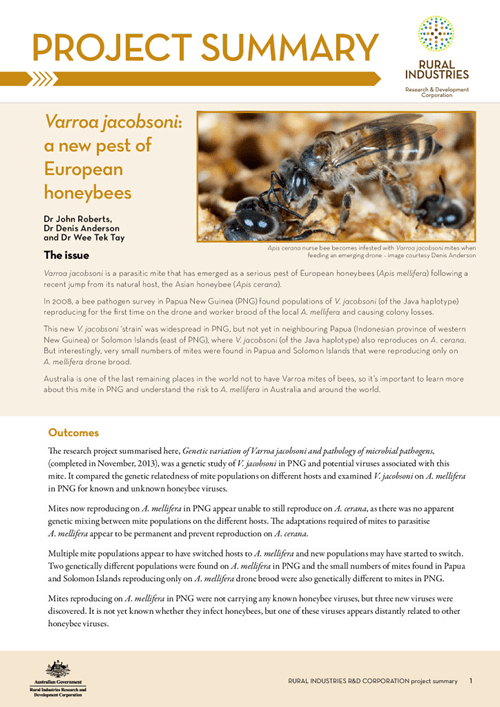Value of honey bee pollination to the Australian economy
Since the mid-1980s, economists have made numerous attempts at estimating the value of honey bee pollination to the Australian economy. The exercise is not straightforward,...
 HONEY BEE & POLLINATION
HONEY BEE & POLLINATION 
Published: 31 Mar 2014
Author(s): Roberts, Dr John , Anderson, Denis, Dr, Tek Tay, Dr Wee
Download report PDF
DownloadVarroa jacobsoni is a parasitic mite that has emerged as a serious pest of European honeybees (Apis mellifera) following a recent jump from its natural host, the Asian honeybee (Apis cerana).
In 2008, a bee pathogen survey in Papua New Guinea (PNG) found populations of V. jacobsoni (of the Java haplotype) reproducing for the first time on the drone and worker brood of the local A. mellifera and causing colony losses.
This new V. jacobsoni ‘strain’ was widespread in PNG, but not yet in neighbouring Papua (Indonesian province of western New Guinea) or Solomon Islands (east of PNG), where V. jacobsoni (of the Java haplotype) also reproduces on A. cerana. But interestingly, very small numbers of mites were found in Papua and Solomon Islands that were reproducing only on A. mellifera drone brood.
Australia is one of the last remaining places in the world not to have Varroa mites of bees, so it’s important to learn more about this mite in PNG and understand the risk to A. mellifera in Australia and around the world.